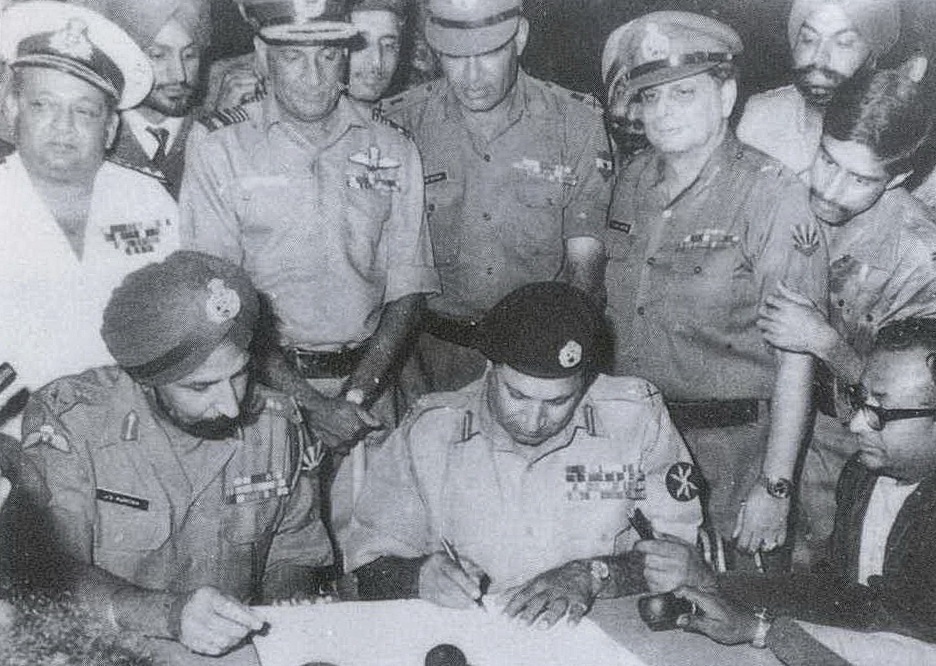As we discussed in the previous blog post, India and Pakistan had a constant simmering of tensions after the creation of the countries with the British Partition. This included both West and East Pakistan that flanked India on both sides. The reason for this non-contiguous country was that a random British lawyer was commissioned to partition over 2000 miles of land even though he had never stepped foot anywhere near the land while being given only 36 days. They had a short list of similarities where the only item on it was that they were both predominantly Muslims. They varied widely in culture, language, and ethnicity. East Pakistan was felt to be West Pakistan’s little brother in a sense with little power or influence in the direction of the country politically. This disconnection was even more emphasized with the discontiguous nature of the country. This was such a prevalent notion that protests were carried out and a large movement was started to call for a vote for independence for East Pakistan. This movement was blocked by the Pakistani military with many of the leaders being jailed. The third war between Pakistan and India gave East Pakistan a chance at independence.

East Pakistan Becomes Bangladesh
The war was sparked when Pakistan launched operation Chengiz Kahn which was a series of air strikes on Indian air stations. What quickly ensued was a full scale war. Due to Pakistan fighting a war on two fronts, India strategically blocked or destroyed key infrastructure lines and cut off all supply lines for Pakistani soldiers. This included food, weapons, ammunition, and general supplies that quickly stifled the army. Around 3,000 Indian soldiers were killed with little captured compared to 10,000 Pakistani soldiers killed and 90,000 being captured. Those deaths pale in comparisons when considering anywhere from 300,000 to 1,000,000 million civilians were killed in East Pakistan alone which caused mass migration to India and beyond. Those numbers show the lopsided nature of the war as it was over in just 13 days making it one of the shortest wars in history. Although Pakistan initiated the conflict and boiled over the seemingly natural tensions between the two countries, India was fully prepared and harshly responded to the attempted take over.

Pakistan’s General Amir Abdullah Khan Niazi surrenders to the Indian Army
The ramification of the war was the secession of East Pakistan to become the nation of Bangladesh with their independence day being March 26, 1971. Due to the weakened state of the Pakistani army, they were simply spread too thin and damaged to try and resist the independence of the new nation. So, Bangladesh was born to replace East Pakistan. Another aspect of the independence was that India supported the Bangladesh freedom fighters in their cause not just openly verbally, but with supplies and soldiers. This of course added another reason for the countries to dislike one another and ultimately made tensions worse. Additionally, this was a large moral blow and loss of confidence for the Pakistani citizens. They were not expecting to lose a war of that manner, especially in just less than two weeks. With the peace treaty, Pakistan also lost critical military points along the India border that would play a massive role in the outcome of the war in 1999. It was a thorough embarrassment that reflected the fragility of the nation and democracy that they were trying to build. This marked a turning point in the region as it became clear to the world that India was now definitively the dominant force over Pakistan and in the region in general where the gap would only continue to grow .
Sources
https://history.state.gov/milestones/1969-1976/south-asia#:~:text=East%20Pakistani%20guerilla%20forces%2C%20supported,to%20respond%20to%20the%20crisis.
The Splitting of East-Pakistan from West-Pakistan in 1971: The Role of India


